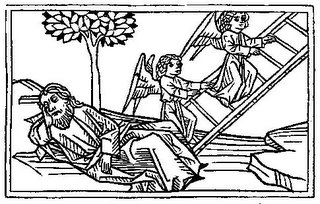Fame and Fortune in the [Fixed] Stars

This week, I wanted to spend some time examining a natal chart for the possibilities offered by the fixed stars. In many ways, the fixed stars are more important even than the planets, though ultimately the two must work in tandem to describe a life. William Lilly, in Christian Astrology, writes: "The fixed stars give great gifts, and elevate even from poverty to an extreme height of fortune, the seven planets do not do so." We can thus see immediately that we are dealing with two different species here; the seven planets will tell you if you will have lots of money, but only fixed stars can give you a place on the Forbes 500.
To demonstrate the technique, I will look at the fixed stars in Oprah Winfrey’s chart. She certainly qualifies as someone elevated from poverty to dizzying heights. She grew up quite poor in the pre-civil rights American South, and today has a spellbound audience of millions who watch her show, read her magazine, and take her recommendations on everything from diet to spirituality. Her cultural influence is great and her personal fortune is estimated at over $1 billion. If Lilly is right, she must have some powerful fixed stars working for her. I will not hold you in suspense: she does. There is also a planetary significator of wealth in her chart, but on its own, it wouldn’t give her the great fortune she enjoys today.
Her chart is as follows (the data is
To start with, it is important to remember that millions of people are born in the course of a century with a planet on a good fixed star. For instance, given a 1.5 degree orb, Jupiter stayed within spitting distance of Regulus for months in 1955. And yet not all those people born then are extremely wealthy. This is because Jupiter conjunct Regulus must be highlighted in some way in a chart for that fixed star to really do its work. It should rule an important house or point (such as the Part of Fortune) and/or be in an angular house. Strong aspects are also an added perk. Also, there seems to be considerable strength in numbers when it comes to fixed stars: one, the stars need to really be of the bright magnitude to do some work (no dimmer than a 2 magnitude body). Two, the more planets on strong fixed stars, the better.
Aldebaran
In Oprah’s chart, we can see three important fixed stars. The MC is conjunct Aldebaran, a royal star. This is a most promising start, since the MC shows what we will make of ourselves in the world – becoming like royalty in whatever our circle of influence, in this case. Aldebaran is the Eye of the Bull in the constellation of Taurus. Ptolemy designates it as a Mars-influenced star. It is one of the four Watchers of the Skies of ancient
Sirius
The Part of Fortune is conjunct Sirius, the brightest star visible today, which is the mouth of the Greater Dog, Canis Major. It is said to be of Jupiterian and Martial influence. Robson ascribes a positive influence to it, stating that it brings honor, renown and wealth. In more ancient times, however, as Sirius made its appearance during the Dog days of summer, it was associated with an excess of choler (inward heat) and ferocity. The Dog in question, mythologically speaking, is one of the hunter Orion’s two dogs, symbolizing the senses of man, which were created to serve. Undoubtedly, the brightness of Sirius shows Oprah’s brilliant fortune. As someone who had made it big in the media – which by definition caters to our senses, the symbolism seems very appropriate.
Rigel
Jupiter in the midheaven is conjunct Rigel, the star on Orion’s heel. Rigel is of the nature of Saturn and Jupiter, and it is also the star at the end of the celestial river Eridanus. According to Rene Guenon, rivers are a special symbol, as they show the ever-changing but constant (yes, it’s a paradox – the water running through the river is never the same water that just flowed through, and yet it’s the same river) nature of the connection between Heaven and Earth. Orion was the tallest and handsomest giant (for he was a Titan born of Gaia, the Earth) who ever lived. As the son of Poseidon, he was able to walk across the ocean floor with his head above the surface. As a great hunter, he once boasted that he could wipe out all animals from the earth; his mother Gaia grew alarmed and sent a giant scorpion to sting Orion in the heel. In another version of the story, the lunar goddess Artemis, in love with Orion, shot him by mistake as he was crossing the ocean. In either case, the fruit of pure generation, which is what all the Titans are, was slain by generation itself. The Moon is the planet of generation, and creatures like scorpions, that breed in great numbers, are a manifestation of generation as well. So Rigel is at once a star of great abundance but also the threat of a sudden fall from grace when the plentiful blessings grow too profuse.
The 1st C.E. poet Manilius writes of Orion: “A son of Orion's will be worth a multitude and will seem to dwell in every quarter of the city; flying from door to door with the one word of morning greeting, he will enjoy the friendship of all.” How appropriate for someone seen in nearly every home and regarded as a friend by so many!
Planetary Influences
We would be remiss if we ignored the promise of wealth by Oprah’s 2nd house. That house is ruled by Venus, which is cadent, so accidentally weak, but also cazimi (within a few minutes of the Sun). Lilly writes of cazimi planets that “they are wondrous strong,” since they are in the bosom of the king (the Sun). Alone, this Venus may have granted some wealth, but not the fabulous wealth and fame Oprah enjoys today.




